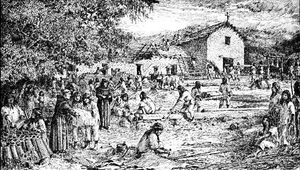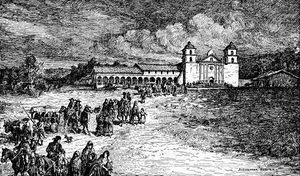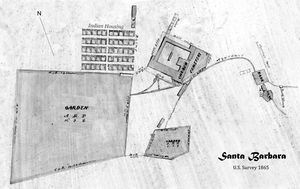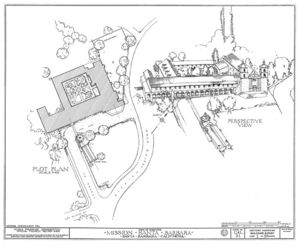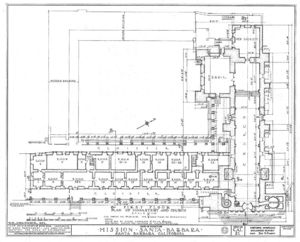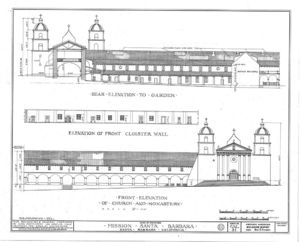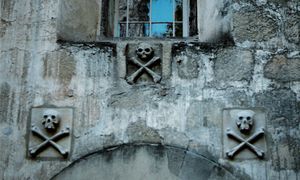Mission Santa Barbara/Gallery: Difference between revisions
Jump to navigation
Jump to search

imported>Robert A. Estremo No edit summary |
imported>Robert A. Estremo No edit summary |
||
| Line 3: | Line 3: | ||
<gallery perrow=3 widths=300px heights=250px> | <gallery perrow=3 widths=300px heights=250px> | ||
Image:Building a Mission.jpg|{{Building a Mission.jpg/credit}}<br />Construction of the first Santa Bárbara mission. | Image:Building a Mission.jpg|{{Building a Mission.jpg/credit}}<br />Construction of the first Santa Bárbara mission. | ||
Image:Battle-at-Mission-Santa-Barbara-in-1824.jpg|{{Battle-at-Mission-Santa-Barbara-in-1824.jpg/credit}}<br />The battle at Mission Santa Barbara in 1824. | |||
Image:Colonists Coming From Church- Santa Barbara.jpg|{{Colonists Coming From Church- Santa Barbara.jpg/credit}}<br />Colonists coming from church at Mission Santa Barbara. | |||
Image:Santa Barbara Alemany Plat.jpg|{{Santa Barbara Alemany Plat.jpg/credit}}<br />The "Alemany Plat" prepared by the U.S. Land Surveyor's Office to define the property restored to the Catholic Church by the Public Land Commission, later confirmed by presidential proclamation. | Image:Santa Barbara Alemany Plat.jpg|{{Santa Barbara Alemany Plat.jpg/credit}}<br />The "Alemany Plat" prepared by the U.S. Land Surveyor's Office to define the property restored to the Catholic Church by the Public Land Commission, later confirmed by presidential proclamation. | ||
Image:Perspective-View-SB-by-HABS.jpg|{{Perspective-View-SB-by-HABS.jpg/credit}}<br />A perspective view of Mission Santa Barbara as prepared by the Historic American Buildings Survey in 1937. | Image:Perspective-View-SB-by-HABS.jpg|{{Perspective-View-SB-by-HABS.jpg/credit}}<br />A perspective view of Mission Santa Barbara as prepared by the Historic American Buildings Survey in 1937. | ||
Revision as of 23:40, 15 November 2012
(CC) Photo: Robert A. Estremo
Stone "skull and crossbone" carvings denote the cemetery entrance at Mission Santa Barbara. Actual skulls and bones were long used to mark the entrances to Spanish cemeteries (campo santos). The practice, dating back many centuries, led to the symbol eventually becoming associated with the concept of death.
